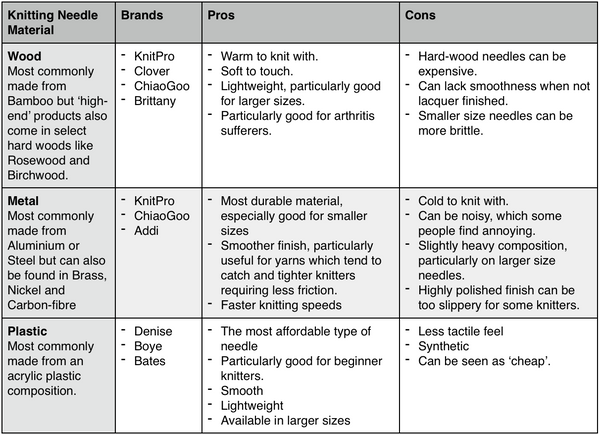Knitting Needles are available in a range of different materials, with the preferred material of your needles coming down to personal preference. It is therefor difficult to claim that any material is “better” or “worse” than another, or more or less appropriate. In order to find the right needle for you, it is recommended to try out each type and decide what you like best. However, we have created a simple table below to help you get started.
We have listed here the most common material types and the available brands for each type, along with the pros and cons of the given material.
If you have a pro or con to add to our table, please let us know it in the comments below. We will continue to update this table to ensure it is a wholistic guide to selecting the right knitting needle material for you.

Whilst we have already explained that knitting needle materials are generally down to personal preference, below we will list a couple of situations where a strong recommendation would be made as to which material is more appropriate.
- Arthritic hands - Wooden needles should be chosen as they are warm and lightweight, so will prolong your knitting capacity.
- ‘Tight’ knitter - Metal needles should be chosen as their smooth finish will allow the yarn to glide easiest over the needle. Note: ‘Tight’ knitting refers to how tight the yarn hugs the needle.
- Lace-weight yarn - Metal needles should be chosen where possible for their durability.
- Beginner knitter - Plastic needles should be chosen as they are the cheapest needles on which to learn (and make mistakes!). Also the metal and wooden needles can be more difficult to knit with for various reasons (flexion, slippery, heavy, etc)
We hope the above article has been helpful. To learn more about Knitting Needle sizes, click the preceding link.
